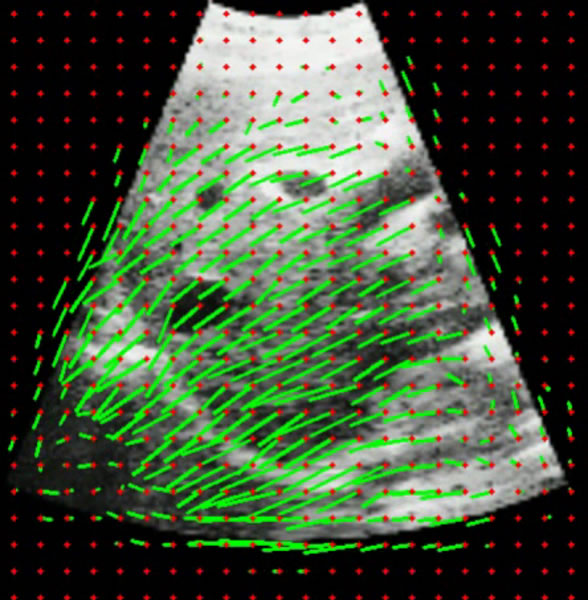Fraunhofer MEVIS successful at MICCAI Challenge on Liver Ultrasound Tracking
This year’s Challenge on Liver Ultrasound Tracking (CLUST) held at the conference MICCAI 2014 in Boston aimed to assess the performance of algorithms tracking liver features in 2D and 3D ultrasound sequences. Fraunhofer MEVIS contributed three uniquely different algorithms to the challenge:
- A variational image registration approach enables the use of non-linear image registration in real-time. The algorithm, designed for tracking 2D ultrasound images benefits from extremely fast, memory-optimized code which besides the global motion of the feature also tracks the local deformation in the vicinity.
- A collaborative approach with Fraunhofer FOKUS, originally developed for MR-image tracking uses optical flow to return dense deformation fields of the whole ultrasound scene. An additional real-time capable prediction allows estimating the motion of landmarks up to 200ms ahead of time – which in practice is needed to account for device latencies.
- A particle filter based tracker developed in cooperation with mediri GmbH evaluates multiple hypotheses about the local motion of a rigidly transformed target. Generalization to three dimensions and the use of a sparse feature representation yield a very universal algorithm with extremely short processing times – nominated winner of the tracking challenge.
Despite their different foci of applications all three algorithms offer very accurate tracking results in real-time. They are able to follow single liver features such as veins and arteries throughout the image sequence yielding real-time information about important landmarks inside the tissue. Currently they are being applied in different ongoing projects which require real-time data processing for intervention. Custom tailored solutions to current and upcoming customer demands will be met by the variety of approaches Fraunhofer MEVIS has to offer – not only to ultrasound data of the liver.
Real-time processing of data is key component in many new medical applications. Radiotherapy, surgery as well as imaging can benefit from real-time information giving the physician more feedback and precision to interact with the patient. Tracking liver features in real-time gives access to valuable medical position information, which may be used in interventional or imaging routines.
 Fraunhofer-Institut für Digitale Medizin MEVIS
Fraunhofer-Institut für Digitale Medizin MEVIS